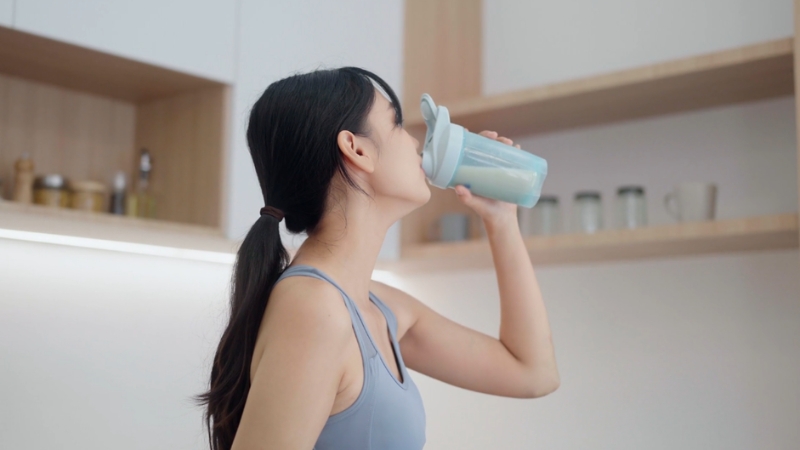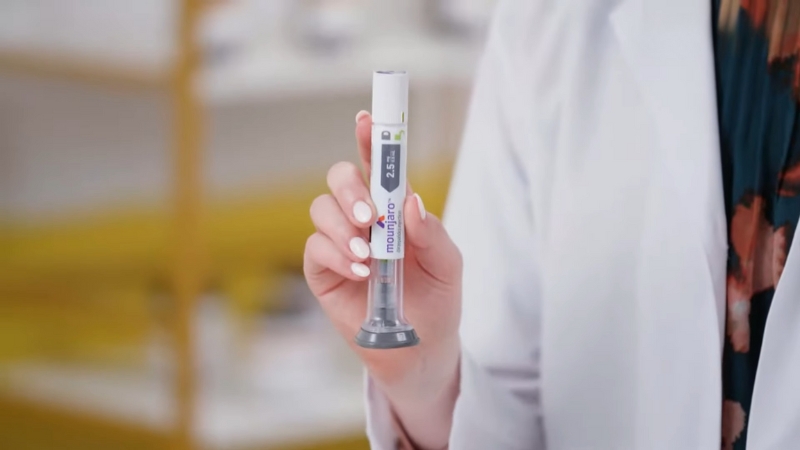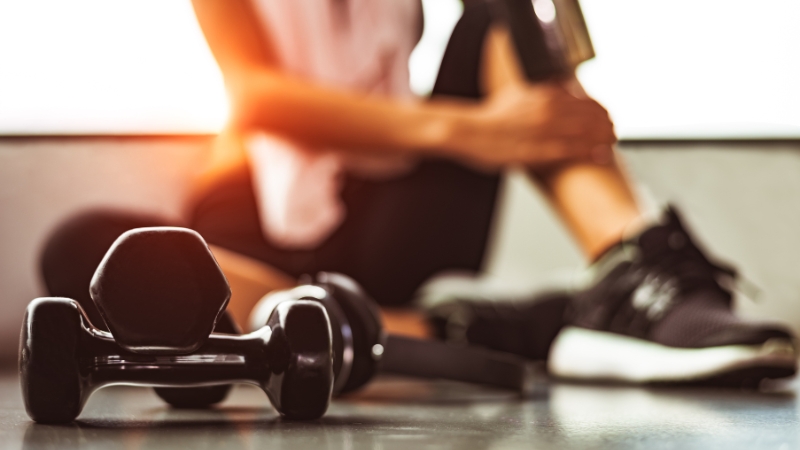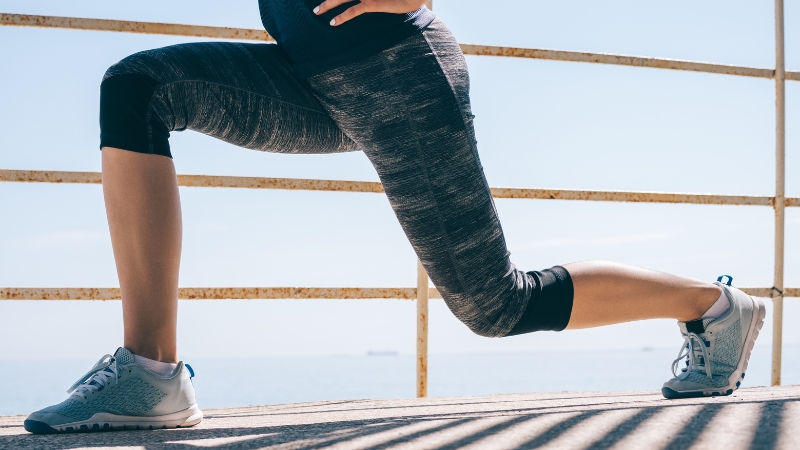
Share Post:
Blood-glucose behavior during exercise depends heavily on intensity, duration, and pre-exercise fuel status.
In strength sessions that involve brief sets at 60 – 90 % of one-rep max, blood sugar usually rises modestly for the first 10 – 15 minutes as the liver dumps glucose in response to adrenaline; it then stabilises or drifts slightly lower as phosphocreatine and glycogen dominate the energy mix.
High-Intensity Interval Training (HIIT), by contrast, generates sharper catecholamine spikes that push hepatic glucose output high enough to create transient hyperglycaemia—often 15–25 mg/dL above baseline within a single two-minute sprint—followed by a pronounced fall during the recovery window when muscle GLUT-4 transporters vacuum glucose without the need for insulin.
In healthy people, that dip is rarely symptomatic, but in individuals taking insulin, sulfonylureas, or new incretin drugs such as Mounjaro (tirzepatide), it can collide with medication-driven glucose lowering and lead to delayed hypoglycaemia if post-workout nutrition is neglected.
The Physiology in Long Form
During a heavy squat set, ATP demand skyrockets for mere seconds, drawing first on phosphocreatine and then on glycolysis using local glycogen. The sympathetic surge that accompanies that effort raises epinephrine and norepinephrine, which in turn stimulate hepatic glycogenolysis.
The result is a transient bump in systemic glucose that peaks while you rack the bar. Because sets are brief and rest intervals are long, skeletal muscle uptake does not outpace liver output; net glucose stays level or drifts slightly downward, especially once repeated sets deplete intramuscular stores.
HIIT changes the timing. Repeated 30- to 120-second sprints stack catecholamine bursts so quickly that hepatic output overshoots muscular demand during each work bout. Glucose spikes, insulin secretion pauses, and circulating lactic acid.
When the sprint ends and heart rate falls toward 65 % of max, insulin resumes, muscle GLUT-4 remains active from the contraction stimulus, and glucose clearance accelerates. That clearance can be large enough that glucose drops below pre-workout baseline 20- to 40-minutes after the final interval, especially if the athlete begins the session fasted or follows a low-carb diet.
People with well-controlled type 2 diabetes often welcome that post-HIIT sink because it improves time-in-range for several hours. Yet anyone on insulin or on potent GLP-1/GIP receptor agonists such as tirzepatide must be cautious: those drugs improve β-cell responsiveness and inhibit glucagon, so hepatic rescue is slower if glucose falls too far.
Anecdotally, athletes on weekly Mounjaro injections report needing an extra 10–15 g of carbohydrate within 30 minutes of HIIT to avoid a sub-70 mg/dL trough two hours later, even if they required no carbs during the actual workout.
Comparative Snapshot of Acute Glycaemic Responses
| Variable | Heavy Strength Training (3 × 5 at 85 % 1RM) | HIIT (10 × 1-min all-out, 1-min rest) |
| Initial glucose change (0-10 min) | ↑ 5–15 mg/dL (adrenergic) | ↑ 15–25 mg/dL (strong adrenergic) |
| Mid-session trend | Stable or slight ↓ (< 5 mg/dL) | Oscillates ↑ during sprints, ↓ during rests |
| 30 min post-exercise | Baseline or ↓ 5 mg/dL | ↓ 10–25 mg/dL (greater muscle uptake) |
| Hypoglycaemia risk window | Low; mainly in prolonged sessions with large muscle groups | Moderate-high 20-90 min post-workout, especially when fasted or on insulin/GLP-1 therapy |
| Best carb strategy | 0–15 g if session exceeds 60 min | 15–30 g within 30 min of finishing (more if medication lowers glucagon) |
Values assume euglycaemic start; individual responses vary with fitness, substrate availability, and medication.
Mounjaro and Exercise-Induced Glucose Swings
Mounjaro® (tirzepatide) combines GLP-1 and GIP receptor agonism in a single weekly injection. Those incretin effects do three things that matter when you train hard: they suppress glucagon, they slow gastric emptying, and they heighten post-prandial insulin release.
During the sprint portion of a HIIT workout, suppressed glucagon is irrelevant because adrenaline overrides it, and hepatic glucose output is still robust according to InsulinOutlet.
The moment intervals stop, however, the liver’s ability to rescue falling glucose is muted precisely when muscle uptake is still high. In practice, athletes on tirzepatide often see a steeper late-drop curve—for some, an additional 5 – 10 mg/dL below the usual post-HIIT nadir—especially if they train fasted or postpone recovery carbs.
Strength sessions impose less risk because the total contraction time is lower, yet even there, a lifter on Mounjaro can slip under 70 mg/dL an hour after a long accessory circuit if no carbohydrate is consumed.
The fix is simple: a 15-gram fast-acting carb dose (half a cup of juice or three glucose tabs) within thirty minutes of finishing HIIT, or within fifteen minutes of a prolonged strength workout, reliably flattens the drop without blunting the drug’s weight-control benefit.
Practical Implications for Different Populations

Recreational lifters without metabolic disease can usually train fasted without major glycaemic swings, provided meals resume within an hour. Continuous glucose monitoring studies show area-under-the-curve glucose in strength workouts remains within ±10 mg/dL of baseline for most healthy subjects.
Endurance athletes who sprinkle HIIT into a weekly plan may notice bigger swings. A pre-session banana or 30 g of maltodextrin keeps liver glycogen generous, flattening the mid-session spike and reducing the later dip.
Because HIIT magnifies insulin sensitivity for six or more hours, post-interval meals should balance 1.0–1.2 g/kg carbohydrate with 0.3 g/kg protein to expedite glycogen resynthesis and blunt nighttime hypoglycaemia.
Type 1 diabetics must dial back rapid-acting bolus insulin 20-50 % if HIIT occurs within two hours of injection, then monitor CGM closely for four hours. Using a reduced basal rate on hybrid closed-loop pumps during and after intervals also helps. Strength sessions usually need smaller basal cuts unless they run > 90 minutes.
People using Mounjaro or similar incretin therapies gain amplified post-prandial insulin secretion and dampened glucagon output. During strength set, this is seldom a problem, but during HIIT, the combination of high muscular uptake and muted hepatic rescue can produce a “silent low” later in the day.
Small, rapidly absorbed carbs—15 g glucose tabs or a half cup of juice—immediately after cool-down restore a safe buffer without negating the drug’s weight-loss benefits.
Why the Differences Exist
- Fuel Hierarchy: Strength sets rely on phosphocreatine and anaerobic glycolysis that taps local glycogen. HIIT, while still anaerobic, involves enough total work that systemic carbohydrate becomes critical, triggering liver glucose release.
- Hormonal Milieu: Catecholamines soar in both modes, but the repeated all-out effort of HIIT multiplies epinephrine peaks, concurrently suppressing insulin and boosting glucagon.
- Muscle Signalling: Contraction activates AMP-activated protein kinase and Ca²-dependent pathways that move GLUT-4 to the cell membrane independent of insulin. HIIT’s larger total contraction time leaves more transporters active in recovery, so blood sugar clears faster.
- Medication Interference: Drugs that increase insulin or blunt glucagon—sulfonylureas, insulin analogs, GLP-1/GIP twin agonists such as tirzepatide—tilt the equation toward lower post-exercise glucose because they undermine the liver’s ability to compensate once muscle uptake surges.
Take-Home Guidelines
- Measure, don’t guess. A CGM or even finger-stick checks before, immediately after, and 45 minutes post-workout reveal your peak.
- Time carbs to your modality. Strength: only if the session is long or started fasted. HIIT: 15–30 g within 30 minutes post-cool-down for most adults; kids and those on insulin may need sooner.
- Adjust medications on training days. Talk to an endocrinologist about reducing mealtime insulin or sulfonylureas before HIIT. Mounjaro users rarely alter dosage, but should carry fast-acting carbs until they learn their pattern.
- Use mixed meals for evening sessions. A balanced supper (slow carbs, lean protein, some fat) two hours after HIIT smooths nocturnal glucose.
- Watch the “second low.” Glucose can sag again 8–12 hours after a hard HIIT block as glycogen is replenished, especially if you trained fasted.
Closing Thoughts
@ucheonyex Which is better for reversing insulin resistance—strength training or HIIT? Both help, but here’s why strength training wins: Muscle tissue is glucose-hungry. Every rep you do increases your muscle’s demand for glucose—even at rest. That’s because muscle stores glycogen and expresses more GLUT4 transporters, which can shuttle glucose into cells without insulin. The more muscle you have, the less insulin your body needs to do the same job. HIIT is still powerful—it activates AMPK, a cellular energy sensor that boosts glucose uptake and fat oxidation. But AMPK activation is short-lived. Muscle mass is 24/7 metabolic leverage. So for lasting change? Build muscle. Use HIIT as a tool—not the foundation. Want the full breakdown of how to reverse insulin resistance from the inside out? Download my free guide or book a complimentary consult at the link in bio. Your metabolism deserves better than guesswork. #insulinresistance #strengthtraining #hiitvsweights #fatlosshelp #glut4 #ampkpathway #RehyaHealth #healthcoach ♬ original sound – Dr.Uche | Health Coach
Strength training and HIIT both improve long-term insulin sensitivity, but their acute effects on blood sugar diverge.
Strength work produces modest bumps that rarely threaten metabolic stability, whereas HIIT delivers fast peaks followed by steeper troughs that warrant mindful fueling, particularly for athletes with diabetes or those using insulinotropic medications like Mounjaro.
Understand your body’s timing, match carbohydrate to intensity, and you can harness the metabolic benefits of both training styles without unwelcome glucose surprises.
Related Posts:
- HIIT in Your 30s and 40s: Benefits, Risks, and What…
- Feeling Bloated at the Gym? Here’s Why It Happens…
- Muscle Recovery Explained - What Happens Inside Your…
- Forget HIIT—Why Low-Intensity Cardio Might Be Better…
- Cardio vs. Strength Training for Aging Bodies -…
- Strength Training for Women - Busting the Bulky Muscle Myth










